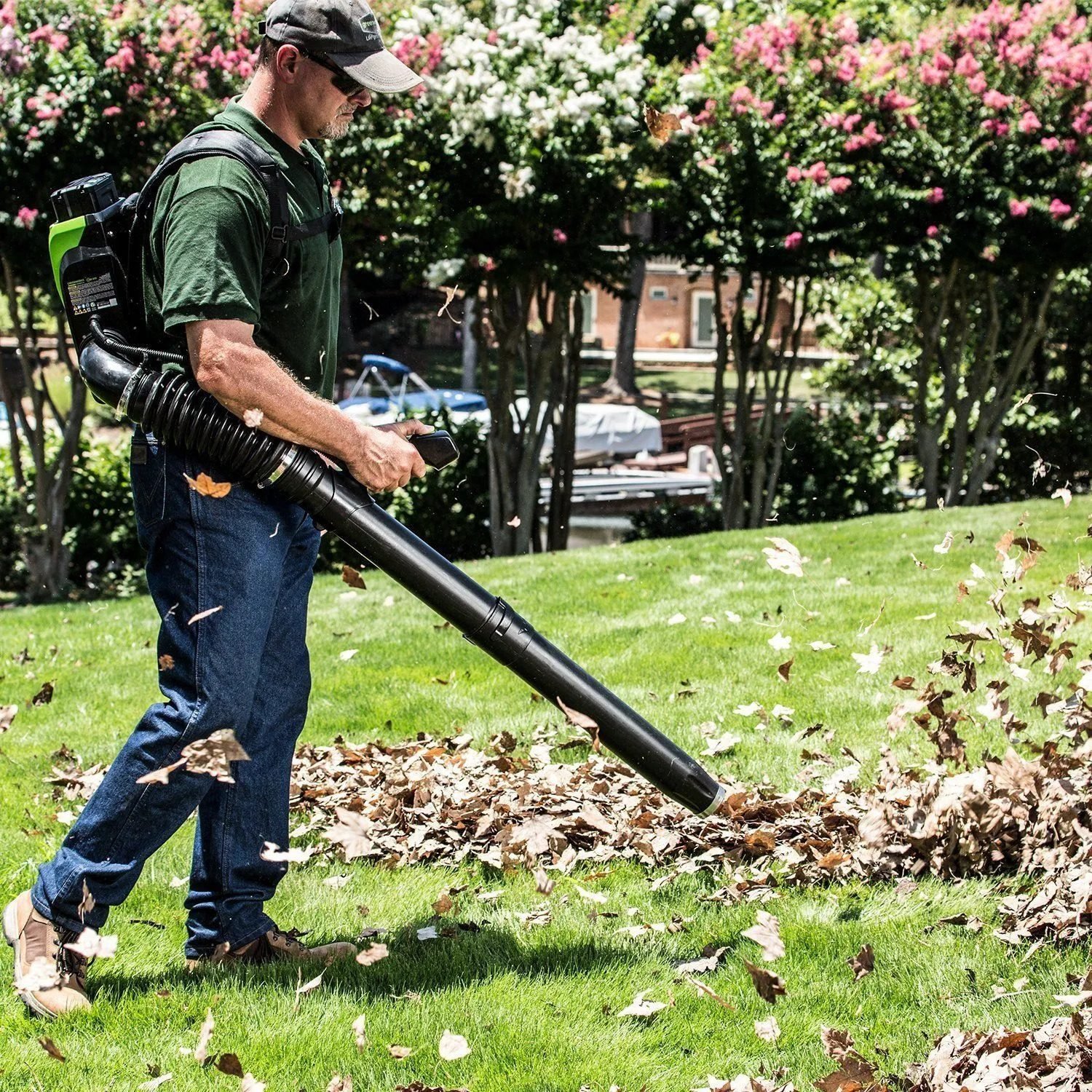Fall leaves are beautiful, but they can also be a real pain when it comes time to clean your yard. If you find yourself wishing for an affordable way to spend less time on lawn maintenance, consider investing in a leaf blower. You’ll probably never be able to throw your leaf rake in the trash. But with a powerful enough leaf blower, you can dispose of leaves and even other yard waste such as small sticks, dirt and debris. Here’s what to look for in a leaf blower. While you’re at it, you might want to discover how to use a leaf blower properly.
Leaf Blower Buying Considerations
First, take a look at your specific situation. How big is your yard, and how many leaves do you need to remove each year during fall clean up? How sensitive are you to noise? And how tight is your budget? Weigh the answers to these questions carefully to find the right leaf blower for your lawn.
Leaf blowers can be categorized two ways: How they are carried (i.e. the form factor), and what kind of fuel they use. Let’s look at the form factor first.
Types of Leaf Blowers
Handheld Leaf Blowers
Handheld leaf blowers are the most popular home option. These self-contained compact blowers are a great choice for small jobs.
Backpack Leaf Blowers
Backpack leaf blowers keep the blower tube in your hand while you carry the motor in a shoulder harness. These models are often more powerful than handheld leaf blowers, and the harness makes them relatively comfortable to use. They’re a good option for long periods of use.
Walk Behind Leaf Blowers
Walk-behind blowers resemble snow blowers. The most powerful of the three, they’re also the least physically demanding, making them a great choice for large yards. However, the time needed to properly store and maintain walk-behind blowers may be too much for some homeowners.
Once you have a feel for which type you prefer, it’s time to look at the power source.
Gas vs. Electric vs. Cordless Leaf Blowers
Gas Leaf Blower
Gas-powered blowers are the most powerful tool for dealing with leaves. But they’re also the loudest and require the most maintenance.
Corded Electric Leaf Blower
Corded electric blowers plug into a standard outlet. They require less maintenance than gas-powered leaf blowers but are limited by the length of the cord, so they’re best suited for small yards. Without a gas engine or a battery pack, corded electric blowers are extremely lightweight. They’re terrific for homeowners seeking an easy-to-maneuver blower for tasks like cleaning gutters.
Cordless Leaf Blower
Cordless electric blowers offer freedom from the cord, and newer models produce power to rival low- to mid-range gas models. Those larger batteries add weight. Battery life varies by manufacturer, so it might require multiple battery swap-outs to clear a large yard. Know how long the battery lasts before you buy.
Leaf Blower Features
Manufacturers tout two figures, cubic feet per minute (CFM) and miles per hour (mph), to describe the blower’s air output, but each focuses on a different aspect. CFM measures how much air the blower puts out, while MPH measures how fast the air moves. A high CFM will let you blow many leaves at once, while a high mph will move heavier debris or wet leaves. If in doubt, opt for a model with a higher CFM.
Look for a leaf blower that feels balanced in your hand and moves and adjusts easily. Functions such as speed control and the shutoff should be easy to reach, ideally allowing for one-handed operation.
Also, pay attention to the design of the nozzle. Wider leaf blower nozzles excel at moving leaves while round nozzles are better moving heavier dirt and debris. (Think of the wide and narrow head of a rake versus a narrower, more rounded shovel blade.) Many leaf blowers allow you to swap out the nozzle or use an adaptor to change the shape of the air flow.
Some handheld blowers offer a vacuum option for light mulching to reuse your yard waste. These combo units may struggle to get through a large pile of leaves but can be perfect for flower beds, where blowing is less effective and raking can hurt delicate plants.
Lastly, consider the blower’s noise level. Leaf blowers are notoriously loud (measured in decibels). Some people find the particular “whine” of one model far more annoying than a competing brand, regardless of decibel rating. (Wearing hearing protection while using a leaf blower is always a good idea.)
Leaf Blower Maintenance
Electric blowers require little maintenance. Simply wipe them down and watch out for dirt build-up on the air intake. If you use a mulcher, clean out small leaf particles from the bag and blower.
Gas-powered blowers require a tune-up every year or so, and you’ll need to keep fuel on hand. Two-stroke motors require a gas/oil blend, so you’ll need to mix your own or buy pre-blended.
Pros like Vince Christofora, engineer and owner of Woodstock Hardware, know how to keep maintenance to a minimum. “If you purchase premixed gas/oil that uses ethanol-free gasoline and you keep the blower in a heated space during winter months, you can cut down on maintenance and maybe skip an annual maintenance or two,” he says.
Walk-behind blowers, with more moving parts, require more maintenance. Even so, the average walk-behind leaf blower doesn’t need as much maintenance as a lawnmower or similar lawn devices. Check out these amazing leaf blower tricks.
How Much Do Leaf Blowers Cost?
Leaf blower prices for home use vary greatly. Handhelds generally are the most affordable, followed by backpack blowers and then walk-behind models. Cordless handheld models run from $25 to $400, backpack blowers from $200 to $600, while walk-behinds can cost $200 to $1,200.
Professional blowers can cost significantly more, and the corresponding upgrade in reliability and power far exceeds what most DIYers will ever need for their leaf blower uses.
ⓘ




















